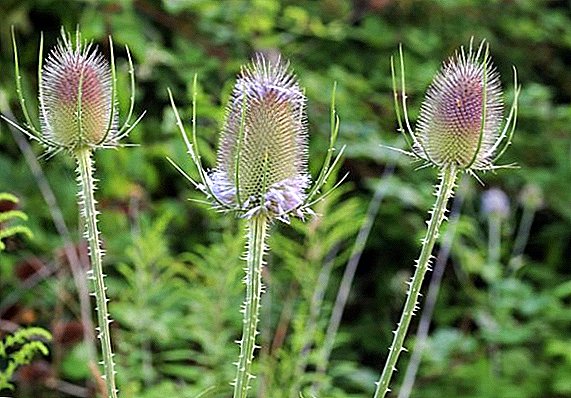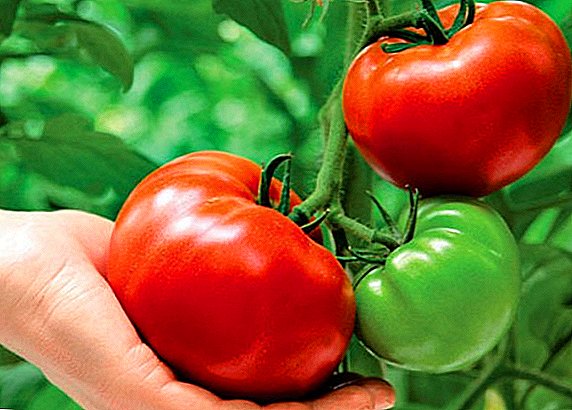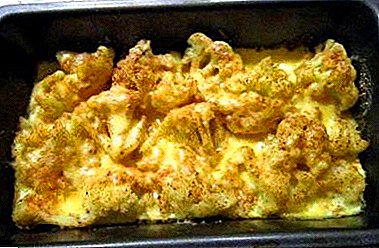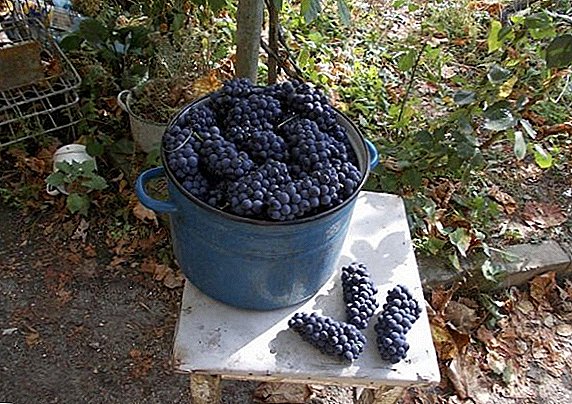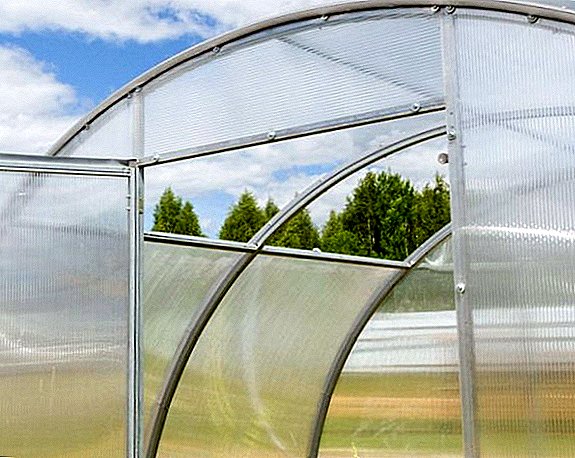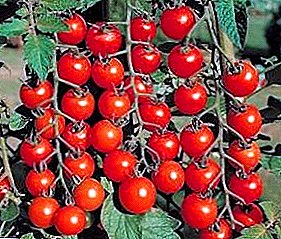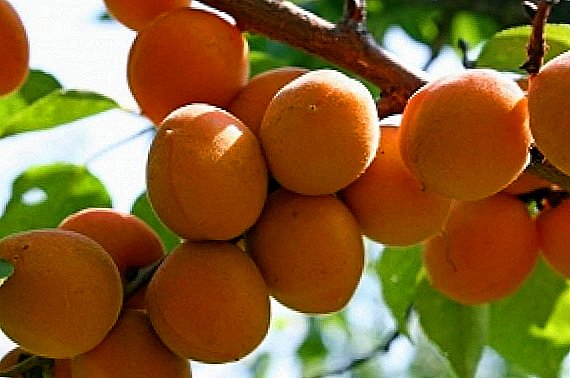
We are all accustomed to the idea that apricot belongs to heat-loving plants and cannot survive in more severe climatic conditions.
But thanks to the efforts of scientists, the Northern Triumph variety appeared, which has a number of advantages.
Let's talk about them.
Description
How nice it is to go out to the summer garden and return from there with a plate of fresh, ripe, juicy apricots grown on our own plot and our own efforts! Not so long ago, this was a privilege of southern latitudes, and the inhabitants of the northern parts could only regret envy.
It is also interesting to read about tips on the care and planting of apricot
But breeders are constantly working to create new varieties, adapted to more adverse weather conditions. One of these varieties and is the "Triumph of the North."
So it beckons with its appearance ripe fetus apricot: yellow-orange, oval-shaped, rather large in size (35-55g), with a thin, slightly pubescent skin and a rich aroma. And, so what to talk about taste! Gentle, juicy and sweet flesh just can not leave indifferent. Even the seeds of the fruit are edible and taste almond nut.
As practice shows, apricot lovers prefer to use this variety fresh, rather than subjected to heat treatment.
Tree vigorous, with sprawling crown and medium branching. In height reaches three to four meters. Blooms very early and is an ornament to any garden. The leaves are large, pointed upward.

First shoots appear on annual saplings still in the nursery. The apricot has a tendency to form premature shoots. Therefore, very early intervention by gardeners is required to prevent the thickening of the crown. And after planting in the garden, an even more intensive growth begins, the length of the shoots can reach a meter or more.
Generally, shoots are divided into three types.
1) Continue shoots, which form the main crop of the tree. The length ranges from 30-60 cm.
2) Fruit twigs are also annual shoots, have an average length, but they are somewhat thinner than those described above. The buds are usually fruit on them.
3) Bouquet branches - are short formations, not exceeding 5 cm., On which flower buds are located and among them one vegetative.
To the merits varieties include: good winter hardiness (especially bark resistant to temperature extremes and sunburn, but the buds already have less high protective properties); abundant yield; excellent taste; quite high resistance to various diseases.
Significant deficiencies not. For someone, perhaps, the size of the apricot is not large enough, but someone considers it completely unsuitable for canning.

Landing
Timing
If you decide to plant an apricot in the fall, then the best month for this will be October. But, best of all, of course, plant a tree in the spring, before the onset of the growing season - in April.
With particular attention you need to approach the choice of location for this heat-loving plant. The terrain must be sunny and protected from cold winds. The southern and southwestern slopes will do. When choosing a place, it is necessary to take into account an important point: the groundwater level should not be less than 2-2.5 m, otherwise the tree in this area will not grow.
The soil
Apricot soil will be light, with good air permeability, without excess nitrogen. Loamy and light loamy are the most suitable. The most optimal is the acidity of the soil, equal to pH 6-7.
It is best to plant apricot tree seedlings..
To do this, dig a hole half a meter deep and about sixty centimeters wide. The bottom of the pit we fall asleep with fine gravel, which will serve as drainage. In the center of the pit we drive a peg for a garter, make around it a mound of sand, clay and peat taken in equal shares.
Raise the top of the hill about twenty centimeters above ground level. Now we plant our tree in the center. If we do everything right, then root neck must be 5 cm higher than the rest of the level. We straighten the roots well and begin gradually to fill them with earth until the pit is completely filled.
At the end we make a mound around the pit and water the sapling (20-30 l). After all the manipulations, the root neck should be aligned with the ground. Recall that apricot can also be grown from the stone and by grafting.
Care
Watering
Despite the fact that apricots are drought-resistant, but from May to June they still need enough water. It is during this period accounted for active growth of the crown. In addition, without the normal water supply of the aboveground part of the plant, the periodicity of fruiting will be observed, since the number of flower buds will be significantly reduced.

Required also water the tree 2-3 weeks before the fruit ripens. In this way, you can increase the size of the fetus. But in the future, closer to the fall, you need to significantly reduce watering. Otherwise, this will lead to an accelerated growth of shoots that do not have time to prepare for the winter and suffer from the cold.
It is best to water early in the morning or in the evening. If the summer was very dry, it is also necessary to spray the crown.
Fertilizers
This is not to say that the apricot tree is too whimsical and requires special fertilizers. But the absence of some trace elements will negatively affect its development. Especially felt the lack of potassium. It is he who helps the plant to resist many diseases and keep young longer.
Manganese also necessary for full development. Its shortage is filled by spraying with a 0.1% solution of manganese sulphate. If you notice that the branches of the tree are unusually bare and the leaves are located mainly on the tops, and the fruit itself is deformed and brown spots appear in its pulp, then, most likely, the plant lacks boron.

In this case, borosuperphosphate is introduced into the soil, and after the end of the flowering period the leaves are sprayed with a 0.1% solution of boric acid. After 4 weeks, this procedure is repeated again.
Disadvantage gland will immediately appear on the leaves as chlorotic spots, and over time they may completely lose their green color and crumble. The main thing is to detect this problem in time, since the light deficiency of this trace element is much easier to fill by spraying the tree with various iron compounds. This procedure is carried out repeatedly in May-June, at intervals of 10 days. And if you miss and run this process, the tree will die.
Organic fertilizer (peat, manure, compost) must be applied as necessary, every three to four years.
Winter for any tree is a challenge. And although the “Triumph of the North” is more adapted to the cold, such precautions as whitewashing the trunk, warming it, and protecting with the help of brushwood from rodents and pests should not be neglected.
To stop the growth of shoots and prevent them from freezing, you need to water the tree with a solution of ash. It is recommended to do this from August.
Pests and diseases
Our apricot variety is more resistant to various diseases and pests compared to many others, but this does not mean that it does not suffer from such diseases as moniliosis or catastrophe. Unfortunately, the one and the other can strike a beloved tree.
Causative agent monilioz is a mushroom that overwinters on the affected areas of the plant, and in the spring forms new spores. At the very beginning of the disease, darkening and drying of the flowers appear, then leaves and shoots are involved in this process. In summer, visible signs are noticeable on the fruits. The flesh darkens, and from above it is covered with black dots, wrinkles and dries.
To prevent the development of the disease, you need to monitor the cleanliness of the garden and the tree trunk, prevent the accumulation of large amounts of foliage in the territory, carefully examine the tree for the first signs of the disease. Whitewashing of the trunk and initial branches are also protective.

Klesterosporiosis - also a fungal disease. Spots appear on the leaves of the tree, which eventually turn into holes, which is why the second name of the disease is "perforated spotting." Cracks appear on the shoots, and sticky liquid (gum) begins to flow out of the wounds. Spraying Bordeaux mixture or copper sulfate should help in the fight against this disease.
Concerning pests, the apricot tree is most often affected by aphids, it loves it and the plum moth, as well as the caterpillar of the butterfly-hawthorn. Here, the methods of control are more mechanical in nature - regular inspection of the tree and the destruction of pests. You can fight for aphids by spraying a soap extract of dandelion or tobacco.
Pruning for apricot is also a necessity. This tree has many buds that are at rest. Their natural awakening is very weak and needs stimulation. This is where anti-aging pruning comes to the rescue, which will greatly enhance this process. Sanitary pruning is carried out in spring and autumn. Removed diseased and damaged branches, and at the same time those that have vertical growth. Some gardeners resort to summer pruning of apricot, which is carried out in late May or early June.
We are sure that if your choice falls on this sort of apricot, and you decide to plant it on your plot, you will never regret it. Especially, if the terrain for planting is in the northern regions and the climatic conditions are much worse than in the warm southern regions. Despite this, in the summer you can still treat yourself to tasty, ripe, and, most importantly, homemade apricots!


